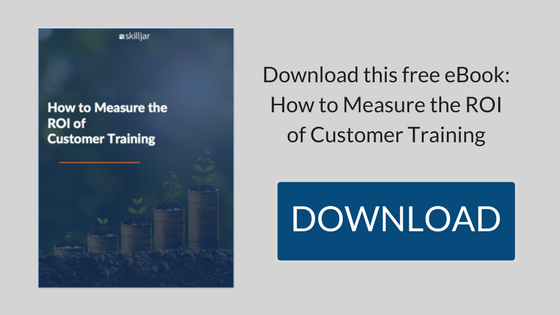 Customer success organizations are chartered with the mission-critical task of making customers successful. Seems simple enough, right? But achieving long-term, consistent customer success can be anything but. Far too often customer success organizations are unsure of the health of their customers and what they can do to improve the customer experience.
Customer success organizations are chartered with the mission-critical task of making customers successful. Seems simple enough, right? But achieving long-term, consistent customer success can be anything but. Far too often customer success organizations are unsure of the health of their customers and what they can do to improve the customer experience.
I’d like to argue that a key factor in determining customer success begins with effective customer training. Unfortunately, customer training is probably one of the most ad-hoc functions in the organization and is often untracked and/or immeasurable.
By effectively deploying customer training and tracking it, you can gain deeper insight into the health of a customer account. Effective training data can help you understand the impact on customer retention, upsells, or reduced support costs.
Training Drives Customer Success
Let’s start by defining success and understand how training fits into the equation.
Simple definition: “Customer success is empowering customers to achieve their business objectives through usage of your product or solution.”
A fundamental element of customer success is empowering through education and training. The end goal is to help your customer realize maximum value from your solution. This is not a new idea but it is often taken for granted, or training is deployed in an ad-hoc manner.
It’s important to first map the desired outcomes you want your customer to experience throughout the training journey. By taking time to map to out these desired outcomes, you can begin to develop a training path, identify which content is needed, and when to deliver the training.
By doing this exercise you begin benchmarking the process and setup your organization to reap the longer-term benefits.
Quantifying the Impact of Your Customer Training
How do we measure training and its impact on the customer success organization and customer? In order to measure impact, it’s important to identify key metrics and benchmark over time. I recommend a few simple metrics to start the process.
Customer Account and User Metrics
- Number of trainees at the customer account
- Number of enrollments
- Number of completions
- Number of hours training
- Number of logins for frequency
(These training metrics are much easier to track if you deploy your online and live training via a customer training platform, like Skilljar.)
Once you gather data on your training you can begin to compare this on an account level against product usage data and support ticket data. All of this data can be aggregated in your CRM like Salesforce, a business intelligence tool, or spreadsheet for reporting.
Some of the impacts to measure with the blended customer account data:
- Reduced time to onboard a customer
- Reduced volume of calls to support
- Reduced time required to train a new customer account
- Increased produce usage (more frequent use and/or more feature use)
- Increased customer retention
Recommended tech stack to gather this data:
- Customer Training Platform (like Skilljar)
- Product Usage (Intercom, Segment.io, Google Analytics, Mixpanel, etc.)
- Support Data (Zendesk, Salesforce, Help Scout, etc.)
- Customer Relationship Management (Salesforce, HubSpot, Dynamics, etc.)
How are you currently assessing your customer success and training programs? Feel free to share ideas in the comments!

